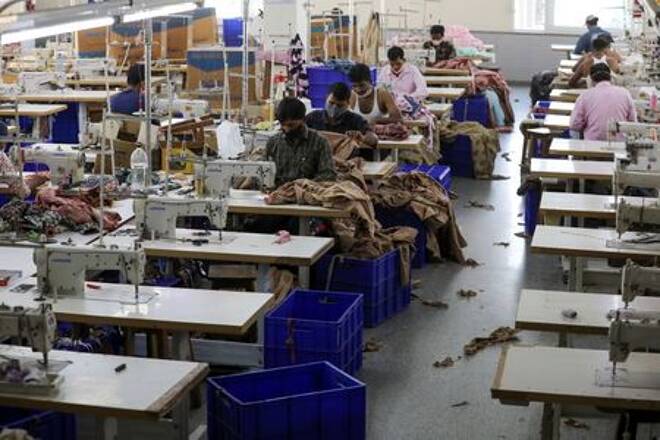Advertisement
Advertisement
India’s Factory Activity Improved in Sept as Demand Strengthened
By:
BENGALURU (Reuters) - India's factory activity improved last month as a recovery in the economy from the pandemic-induced slump boosted demand and output, according to a private survey, but firms reduced headcount at the sharpest pace since May.
That recovery might continue for at least a few months,supported by ultra-easy monetary policy and continued fiscalspending.
A hike in the Reserve Bank of India’s key interest ratelooks to be a rare possibility until at least next fiscal yearand India’s government said earlier this week it would continuewith its borrowing-backed spending to revive the economy.
The Manufacturing Purchasing Managers’ Index,compiled by IHS Markit, rose to 53.7 in September from 52.3 inAugust, staying above the 50-level separating growth fromcontraction for the third straight month.
“Indian manufacturers lifted production to a greater extentin September as they geared up for improvements in demand andthe replenishment of stocks,” noted Pollyanna De Lima, economicsassociate director at IHS Markit.
“There was a substantial pick-up in intakes of new work,with some contribution from international markets.”
Improvements in both domestic and overseas demand saw neworders expand at a quicker pace in September and factoriesraised output at a significantly faster rate compared to August.
However, that failed to encourage factories to hire moreworkers – a much needed step to boost weak labour marketconditions – and instead they reduced their workforce at thesharpest pace in four months.
“Companies continued to purchase extra inputs in September,but jobs were little changed over the month. In some instances,survey participants indicated that government guidelinessurrounding shift work prevented hiring,” added De Lima.
Meanwhile, after moderating in the first two months of lastquarter input cost inflation hit a five-month high, partlydriven by rising fuel prices, transportation costs andsupply-chain disruptions.
But output prices increased at a weaker pace, indicatingfirms were only able to partially pass on the extra costs tocustomers.
Still, optimism about the year ahead improved slightly lastmonth as a continued easing of pandemic mobility restrictionsraised hopes for a further improvement in demand.
For a look at all of today’s economic events, check out our economic calendar.
(Reporting by Indradip Ghosh; Editing by Kim Coghill)
About the Author
Reuterscontributor
Reuters, the news and media division of Thomson Reuters, is the world’s largest international multimedia news provider reaching more than one billion people every day. Reuters provides trusted business, financial, national, and international news to professionals via Thomson Reuters desktops, the world's media organizations, and directly to consumers at Reuters.com and via Reuters TV. Learn more about Thomson Reuters products:
Latest news and analysis
Advertisement
